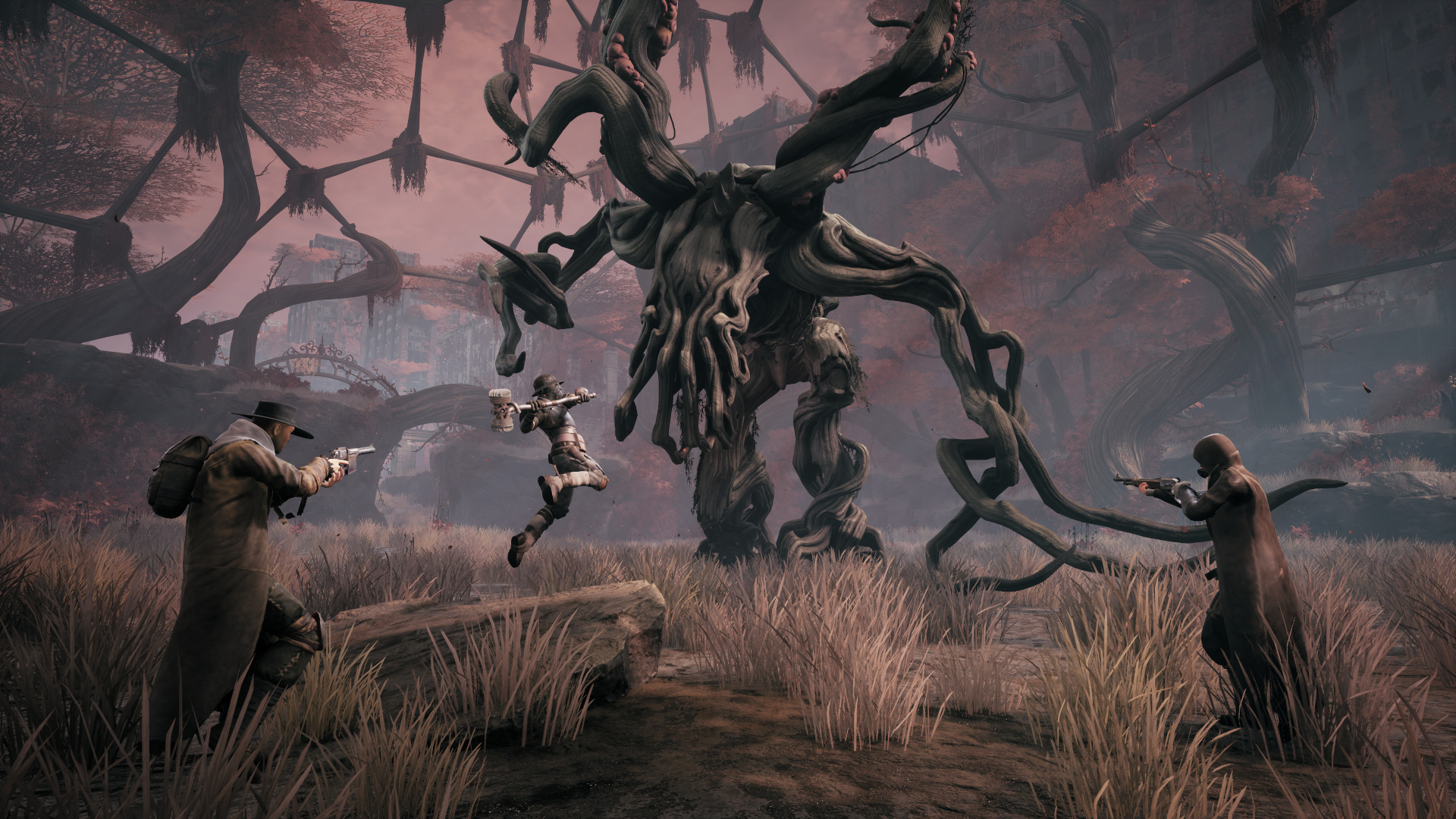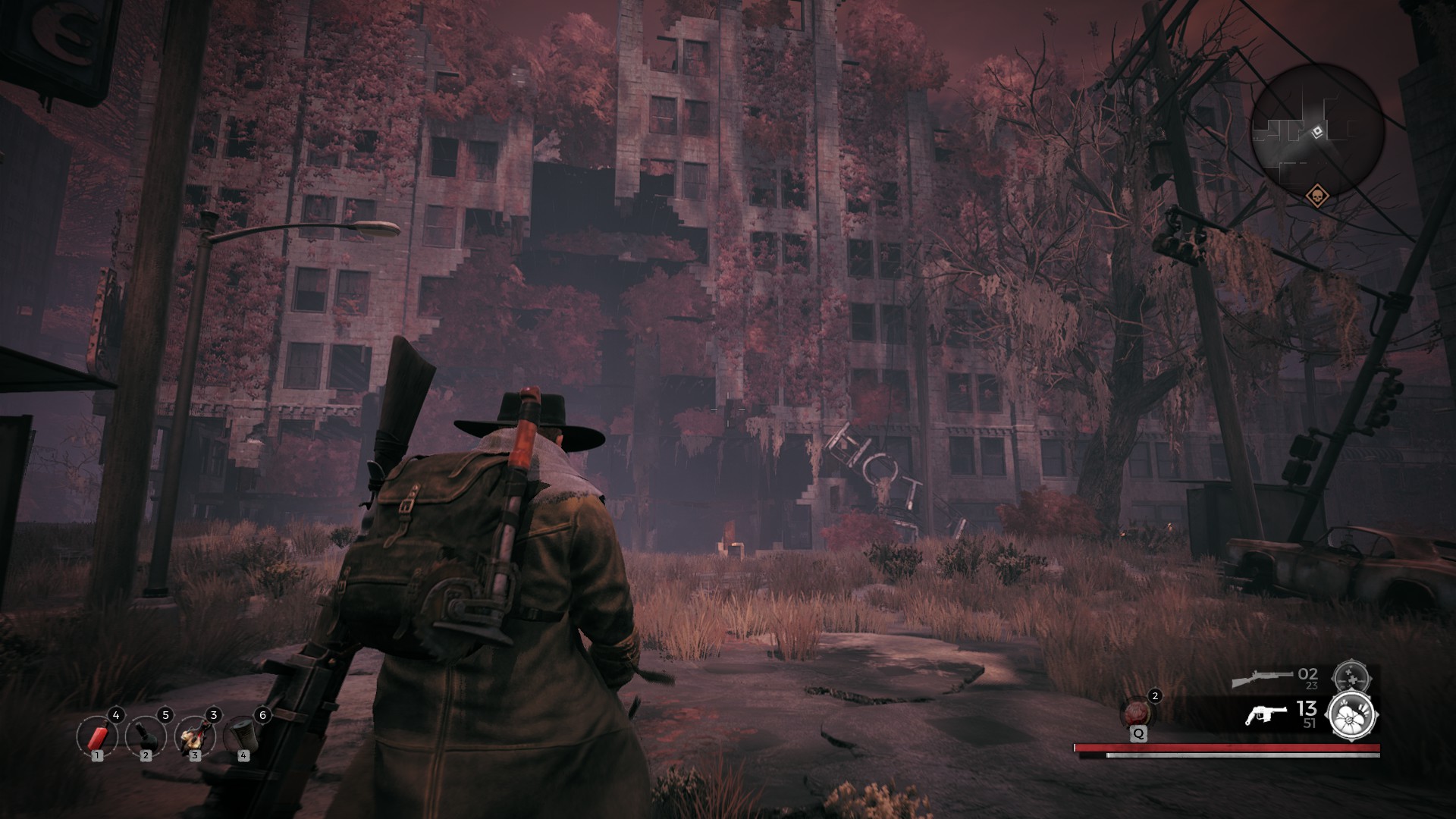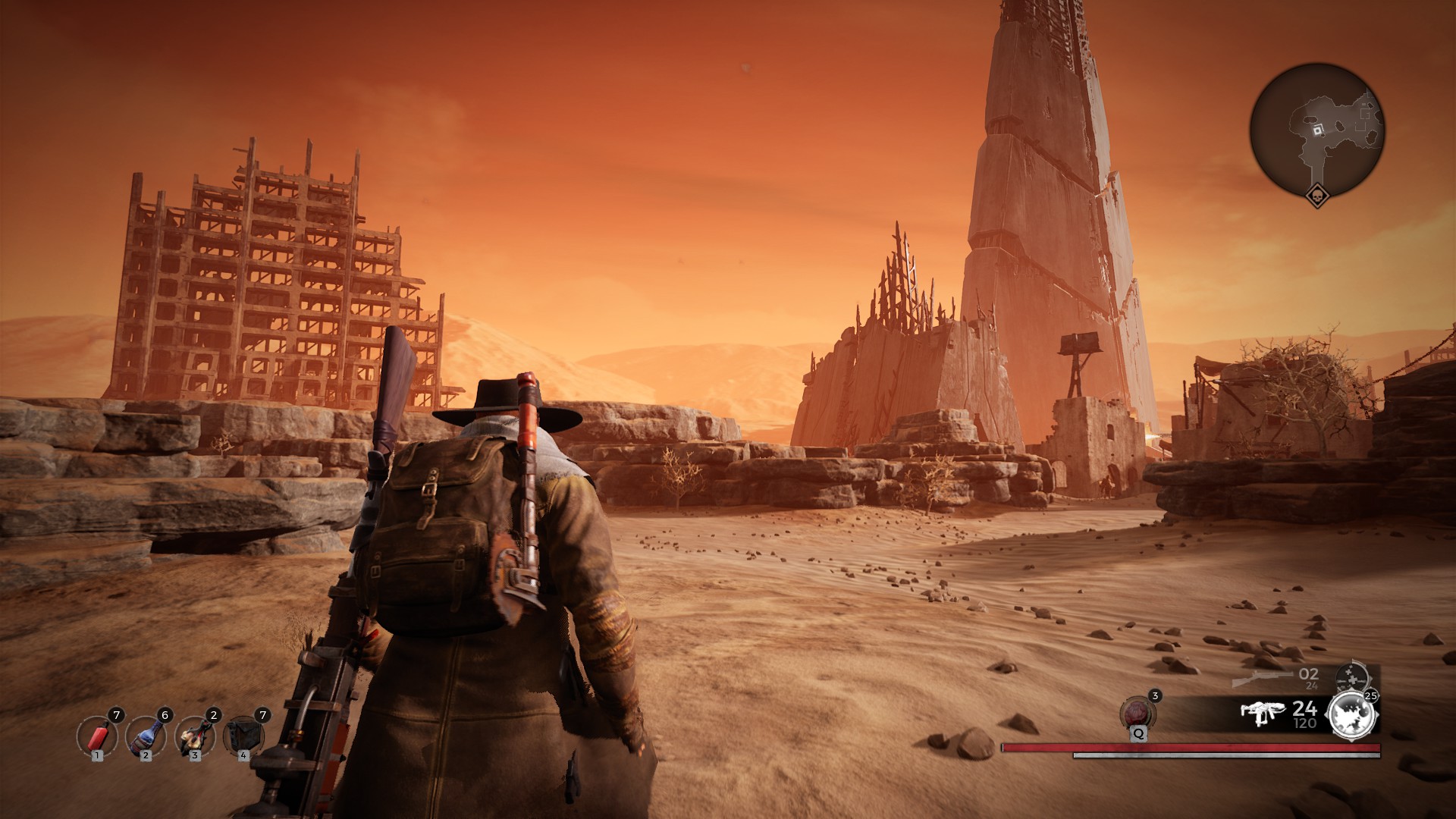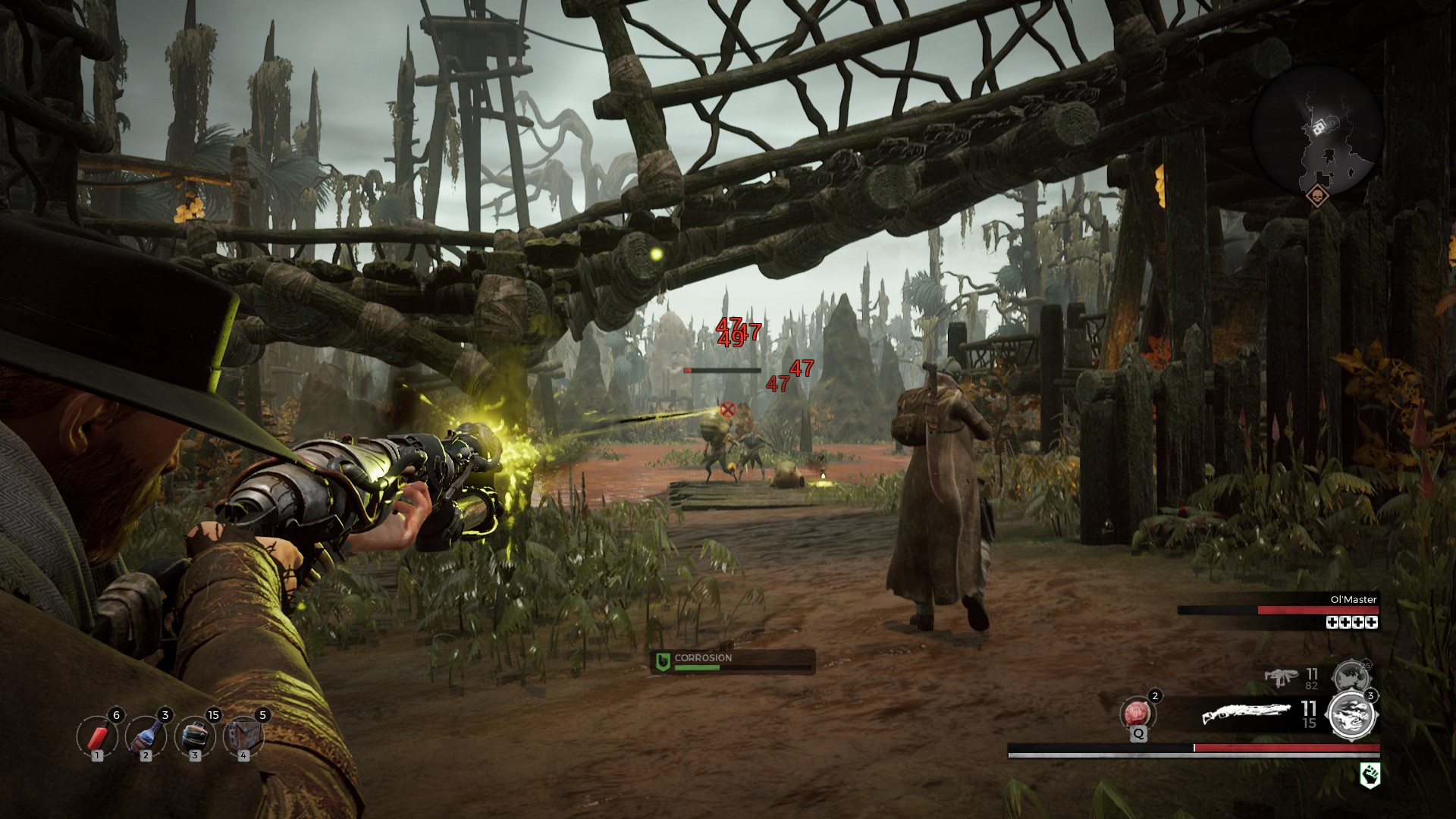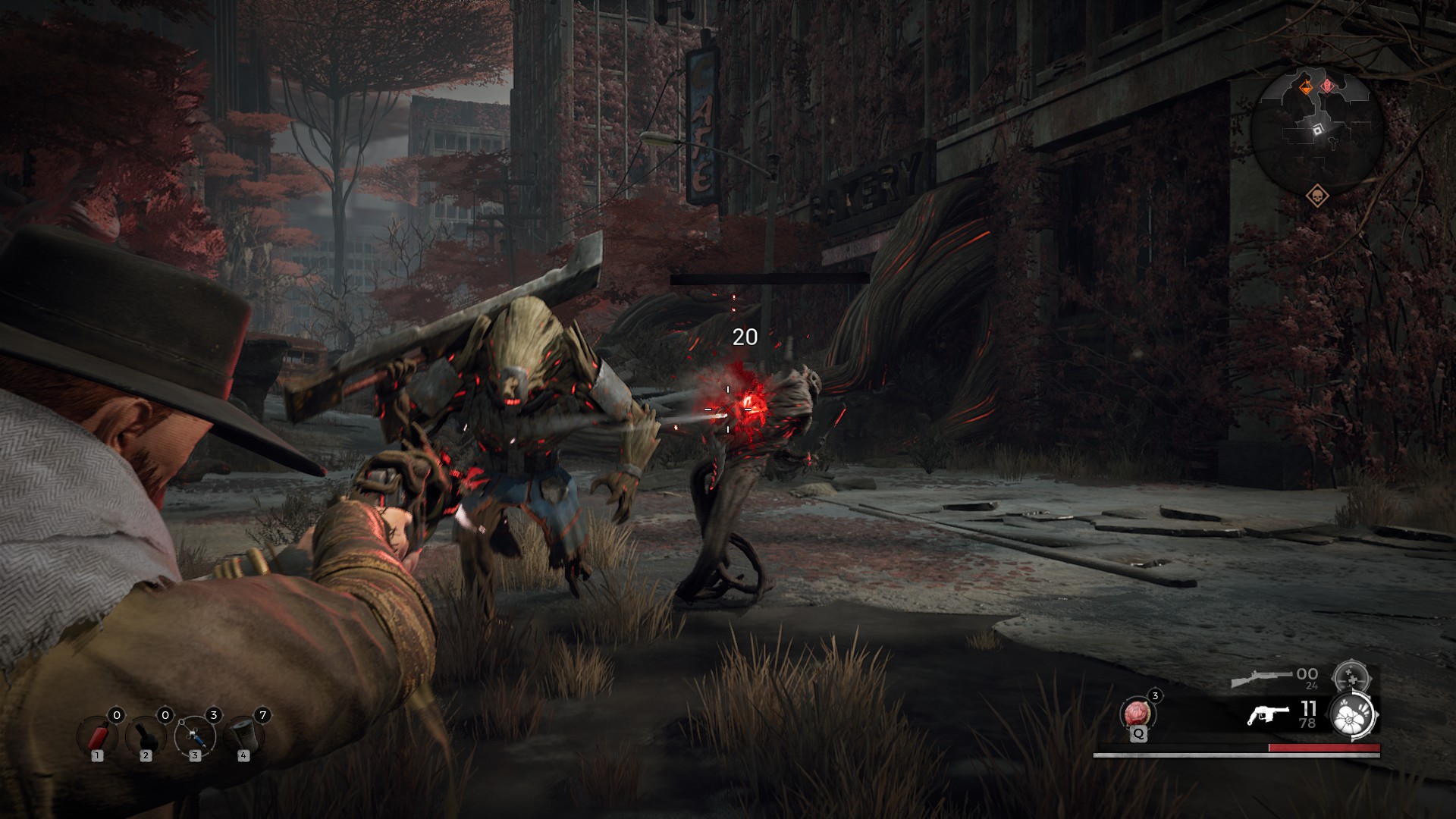Our Verdict
A flawed but fascinating hybrid, Remnant: From the Ashes is a looter-shooter charged with potential.
PC Gamer's got your back
What is it: A third person looter-shooter that blends Division-like gunplay with Dark Souls-style bosses.
Expect to Pay: $40/£30
Developer: Gunfire Games
Publisher: Perfect World
Reviewed On: Intel core i5-3570K 3.40 GHZ, Nvidia GTX Titan, 16 GB RAM
Multiplayer: Three-player online co-op
Link: Official site
At a glance, Remnant: From the Ashes looks like it was coughed out by a game development algorithm. It’s a third-person looter-shooter and a Dark Souls-inspired boss rush, with an emphasis on co-op and a dynamically generated campaign. Stylistically it's inspired by fantasy, science fiction, Westerns, post-apocalyptic worlds like Fallout and Gears of War, and various kinds of horror fiction, most notably the SCP Foundation. Even the title reads like it was generated by a Twitter bot.
I was apprehensive going in, but was surprised by how much I enjoyed Remnant. It’s a bizarre game, and it's completely shameless in how it assembles borrowed concepts, but like a wasteland vehicle from a Mad Max film, it works.
Ashes to castles
Initially, my scepticism appeared well-founded. Remnant gets off to an underwhelming start. Its introduction sees your custom character washed up on an island with nothing but the clothes on their back and a brittle-looking sword. The ensuring tutorial guides you through some bleak city ruins, instructing you in the basics of roll-dodging and melee attacks while you’re assaulted by tree-people known as the Root.
Remnant suddenly conjures a castle out of the sky, and the whole game becomes far more interesting.
Eventually you end up at Ward 13, the Firelink Shrine of Remnant’s world. Here you learn that the Root have taken over all of Earth and the only way to stop them is by destroying the heart of the Root located in a nearby tower. Unfortunately, the only person who knows how to get into the Tower—a man known as the Founder—has disappeared.
Despite the fact that you’ve just arrived, have been recently wounded, and your only significant contribution to Ward 13 is restoring the power, the leader of the Ward decides you’re the person to track down the Founder. You’re given a couple of guns and a contrived-looking outfit based around your starting class, and are sent out to explore the island’s destroyed city.
It’s a lackluster opening, and the first hour of the campaign doesn't fare much better. Remnant’s representation of a destroyed Earth is generic and dull, like Gears of War viewed through bloodshot eyes. It’s all rusted piles of rubble, hollowed-out tower blocks, and dank brown sewers. The only saving grace is that you don’t have much time to admire the scenery, as the Root are up in your face like pollen in summertime.
While Remnant resembles a cover shooter, in practice it plays much more like Dark Souls from an over-the-shoulder perspective. Even basic enemies are aggressive and hit hard, so to stay alive for any length of time you need to evade their attacks. You also can’t rely on enemies dropping ammo, and you burn through your own supply quickly, so where possible it's best to get up close and personal, dispatching opponents with your melee attacks.
Keep up to date with the most important stories and the best deals, as picked by the PC Gamer team.
Gradually, you pick your way through the ruins, moving between glowing crystals analogous to Dark Souls’ bonfires and fighting some creatively-designed bosses (more on those later). It’s all fine, but nothing stands out about the design. Then, as you’re walking down another grey and dilapidated street, Remnant suddenly conjures a castle out of the sky, and the whole game becomes far more interesting.
Guns that shoot bees
Within minutes of this event, you’re no longer wandering the ruins of Earth. You’re on Rhom, a desert planet populated by spear-chucking cavemen, living in the shadow of ancient obsidian obelisks that stab upwards to a sun caught in an eternal eclipse. It’s the beginning of a brilliantly bonkers pan-dimensional adventure. It’s also the moment when the game’s systems start to pay off.
Unlike The Division, which drip-feeds the player incrementally better guns, Remnant’s loot is less common and more tailored. You’ll pick up one or two interesting items per area, usually a ring or a necklace that provides a specific buff. The real treasures, however, are dropped by bosses: powerful items which can be taken back to Ward 13 to craft new weapons and weapon mods.
These weapons are as unique as the bosses used to make them. After defeating a fire-spitting demon called Singe, I crafted a submachinegun that fired incendiary bullets as a default, with a power that turned it into a flamethrower. During my time with Remnant, I also wielded a gauss rifle that created black holes, a pistol that fired swarms of bees, and a radioactive beam-rifle. Some weapons have replaceable mod powers, letting you modify your favourite gun with an area-of-effect heal or the ability to summon a minion to your side.
It’s an exciting and creative arsenal, far more compelling than a torrent of nigh-identical assault rifles. I didn’t see as much variety with either melee weapons or armour, but it is possible that I didn’t encounter them because of the way Remnant’s campaign works.
Remnant’s most unique feature is its dynamically-generated campaign. Environments can be laid out in different ways and dungeons located in different places, while some areas may or may not appear in your campaign at all. Similarly, each boss encounter has several possible variants. (If you get stuck, you can re-roll your campaign, maintaining your character progress but regenerating the world.)
I played through the first half of Remnant twice, and in the second run, Singe was replaced by the Ent, a giant tree with a face like Cthulhu. I should also point out that there are tons of standard enemy types—I’d estimate around a dozen per world—and bar a couple of annoying exceptions, most of them are fun to fight.
The dynamic generation is a clever way of encouraging you to invest in other player’s campaigns to see more of the game. Of course, this means you’ll need to play Remnant multiple times to see everything. Yet for a game that borrows from both The Division and Dark Souls, Remnant plays fast. Your first campaign will likely take you anywhere between 12 and 20 hours depending on how you cope with the challenge. With a high-level character, however, you could potentially do a complete run on normal difficulty in half that time.
Style salad
Remnant is a better game than first impressions indicate, but that isn’t to say it becomes pure brilliance after an hour. My biggest gripe with Remnant is that, while the boss encounters look great, in practice they’re far too reliant on spamming players with mob enemies to make them challenging. Making boss fights cater for between one and three players in terms of challenge can’t be easy, but the effect of Remnant’s approach is that, rather than thinking about what the upcoming boss is going to be like, you’re thinking, “I hope the mob spawns aren’t too awkward on this one”.
Remnant's strange worlds, robust challenge, and unique loot make it a refreshing alternative to the drab militarism of The Division.
Elsewhere, although I’m glad Remnant quickly moves away from its grungy apocalypse into world-hopping weirdness, it's a strange stylistic salad, combining elements with seemingly no relation to each other. The issue partly lies with how Remnant borrows Dark Souls’ approach to storytelling, using item descriptions and fragmented conversations with NPCs to build its lore piecemeal. Dark Souls’ world is cogent, consistent, and painstakingly built, whereas Remnant too often feels like it’s making things up as it goes along. There are plot reasons for this revealed right at the end, but it feels like a cop-out, veering dangerously close to one of the most wearisome clichés in storytelling.
There are a couple of more specific problems, too. During my playthrough, both myself and my main cooperative partner experienced several crashes to desktop, which is not something you want to happen in the middle of a boss fight. Meanwhile, the Dragon Heart—Remnant’s equivalent of an Estus Flask—takes too long to use considering the mob-heavy nature of most boss encounters. Lastly, if you die during a game, you’re stuck watching your co-op buddies until either they die or you respawn. It would be useful to be able to view your inventory in such circumstances, tinkering with weapon builds or reading item descriptions.
Nonetheless, Remnant's strange worlds, robust challenge, and unique loot make it a refreshing alternative to the drab militarism of The Division. Ubisoft’s game may be more well-rounded overall, but Remnant is undoubtedly more interesting. Given some adjustments, it could become one of the best examples of its genre around.
A flawed but fascinating hybrid, Remnant: From the Ashes is a looter-shooter charged with potential.
Rick has been fascinated by PC gaming since he was seven years old, when he used to sneak into his dad's home office for covert sessions of Doom. He grew up on a diet of similarly unsuitable games, with favourites including Quake, Thief, Half-Life and Deus Ex. Between 2013 and 2022, Rick was games editor of Custom PC magazine and associated website bit-tech.net. But he's always kept one foot in freelance games journalism, writing for publications like Edge, Eurogamer, the Guardian and, naturally, PC Gamer. While he'll play anything that can be controlled with a keyboard and mouse, he has a particular passion for first-person shooters and immersive sims.
